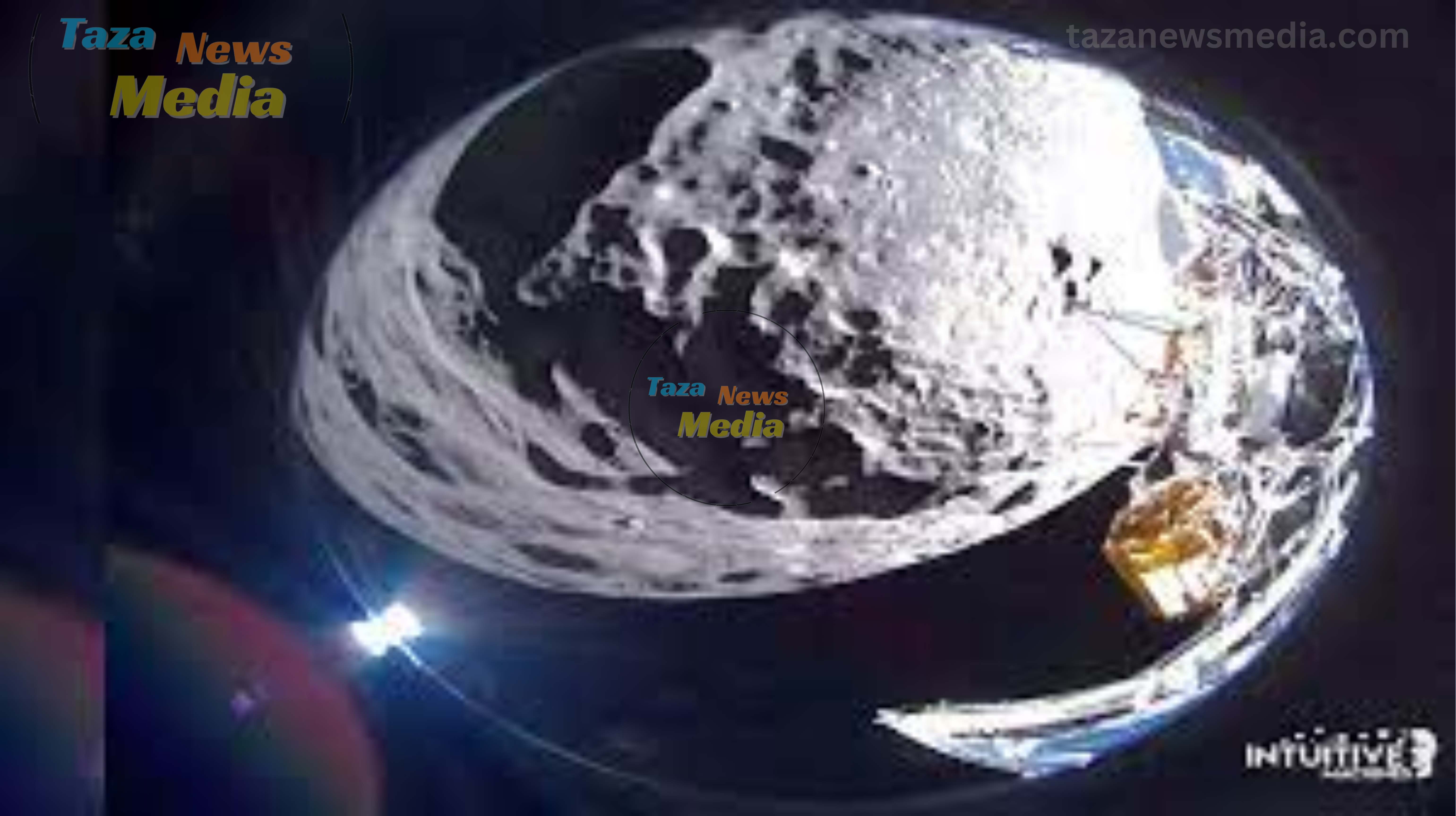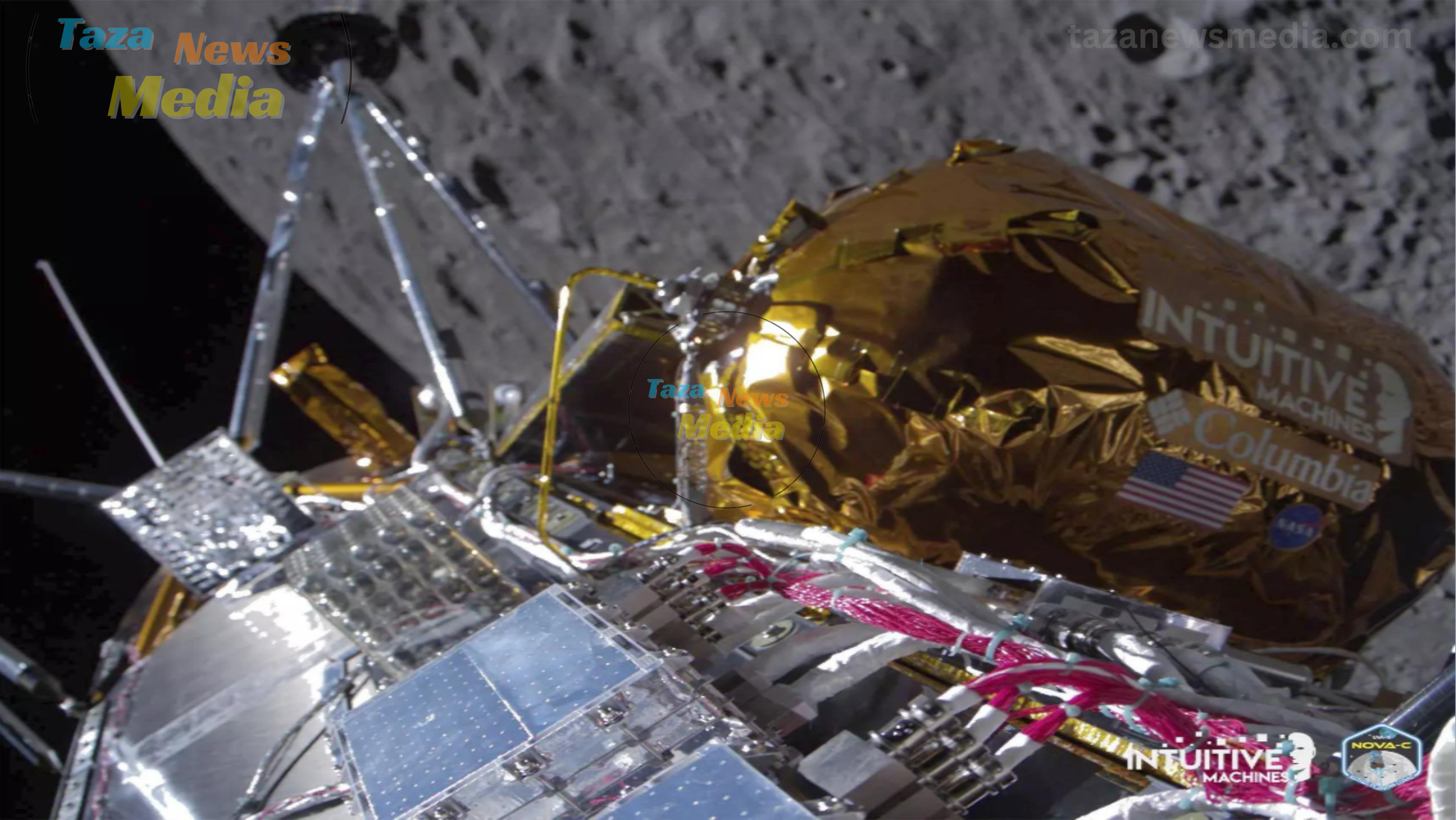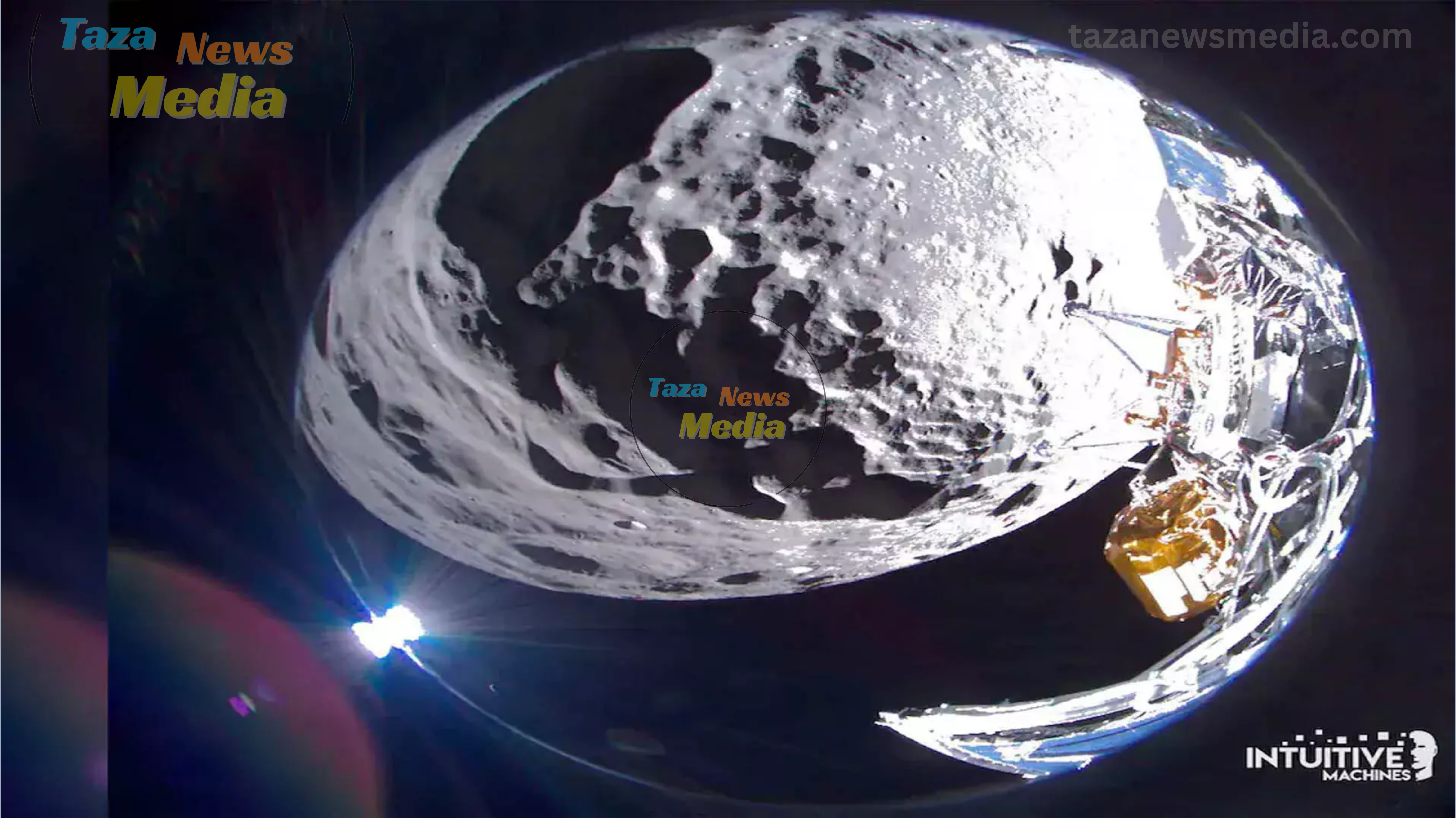On Thursday, the Odysseus spacecraft made a thrilling final drop and touched down close to the lunar south pole.

Washington: Even as ground controllers attempt to download data and surface images from the unmanned rover, the first American spacecraft to land on the Moon since the Apollo period is likely laying sideways after its spectacular touchdown, the firm that created it said on Friday. At 6:23 p.m. Eastern Time (2323 GMT) on Thursday, the Odysseus spacecraft touched down close to the lunar south pole. The final descent was tense, requiring ground crews to switch to a backup guidance system and taking several minutes to make radio communication after the lander came to rest.
The business behind this historic first-ever private lunar landing, Intuitive Machines, first claimed on social media that its hexagonal spaceship was upright. However, CEO Steve Altemus informed reporters on Friday that this claim was based on incorrect data.
Rather, it seems as though it caught a foot on the surface and toppled over, landing horizontally with its top resting on a tiny rock. This took away some of the glory from what was mostly heralded as a historic feat.
Over the weekend, a NASA mission known as the Lunar Reconnaissance Orbiter should be able to take pictures of Odysseus, which will aid in determining its precise position.

Although the team’s solar arrays were oriented upwards, Altemus stated that the downward-facing antennas “are unusable for transmission back to Earth, and so that really is a limiter in our ability to communicate and get the right data down so we get everything we need for the mission. ” This meant that the team’s capacity to download data from the science experiments on board was hindered.
The “EagleCam” equipment was created by Embry – Riddle Aeronautical University, however because of difficulties with the landing, it was decided not to launch an external camera to record the fall in real time.
However, the crew will still make an effort to launch it from the ground in an effort to capture an exterior photo of Odysseus.

Moon fleet for commerce
Under a project that outsources cargo services to the private sector in an effort to save money and promote a broader lunar economy, NASA paid Intuitive Machines $118 million to carry six experiments.
In addition, Odysseus transports goods for individual clients, like as a reflective heat cover made by Columbia Sportswear that shields the spacecraft’s cryogenic propulsion tank.
In addition to gathering ice for drinking water and rocket fuel for future further trips to Mars, the United States and its international allies hope to establish permanent settlements on the south pole.
improvised solution
Still today, Odysseus is regarded as the first successful mission of a new series of NASA-funded lunar landers intended to conduct scientific studies that would prepare the way for American humans to return to the Moon later this decade as part of the Artemis program.
Higher stakes are at risk to show that private sector can replicate a feat last accomplished by US space agency NASA on its manned Apollo 17 mission in 1972, after another American company’s moonshot attempt last month ended in failure.
Lorem ipsum dolor sit amet, consectetur adipiscing elit. Ut elit tellus, luctus nec ullamcorper mattis, pulvinar dapibus leo.

Welcome To Taza News Media, Your Gateway To A Dynamic Realm Of Information And Enlightenment. As You Step Into Our Digital Home, We Invite You To Embark On A Journey That Transcends Conventional News Reporting. At Taza, We Believe In The Power Of Storytelling, Weaving Narratives That Go Beyond The Surface To Unveil The Heart Of Every News Piece. Our Commitment To Journalistic Integrity Is The Cornerstone Of Taza News Media, Ensuring That You Receive Not Just News Updates But A Thoughtful Exploration Of The Stories That Shape Our World.







